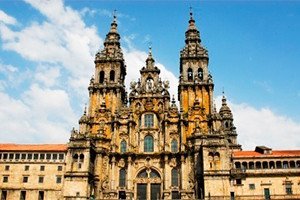 James (Santiago), son of Zebedee and Salome, brother of Saint John the Apostle, was a fisherman before becoming one of Jesus’ disciples and the great evangelizer of the Iberian Penisula. Intent on quelling the rise of Christianity, Herod Agrippa, King of Judea, later ordered James’ beheading. Two of his disciples, Atanasio and Teodoro, transported his body from Jerusalem to Iria Flavia (Padrón) on the Galician coast.
James (Santiago), son of Zebedee and Salome, brother of Saint John the Apostle, was a fisherman before becoming one of Jesus’ disciples and the great evangelizer of the Iberian Penisula. Intent on quelling the rise of Christianity, Herod Agrippa, King of Judea, later ordered James’ beheading. Two of his disciples, Atanasio and Teodoro, transported his body from Jerusalem to Iria Flavia (Padrón) on the Galician coast.
Around 820 CE, a villager named Pelayo observed a radiant glow above a hill lasting several nights. He informed the bishop Teodemir of Iria, and when they arrived at the mysterious site, they found a tomb and three bodies that were identified as Saint James and his two disciples. Henceforth, the tomb became a sacred site for many devoted pilgrims, who journeyed from all over Europe to visit it. Along the primary route to the site, hospitals, bridges, monasteries and churches were constructed—the wonderful historic and artistic heritage of the Camino de Santiago.
In 1993, the Camino was declared a UNESCO World Heritage Site, relaunching its popularity among hikers and pilgrims alike. The Camino continues to grow, with over 200,000 pilgrims from all four corners of the globe arriving in the city of Santiago de Compostela every year.


